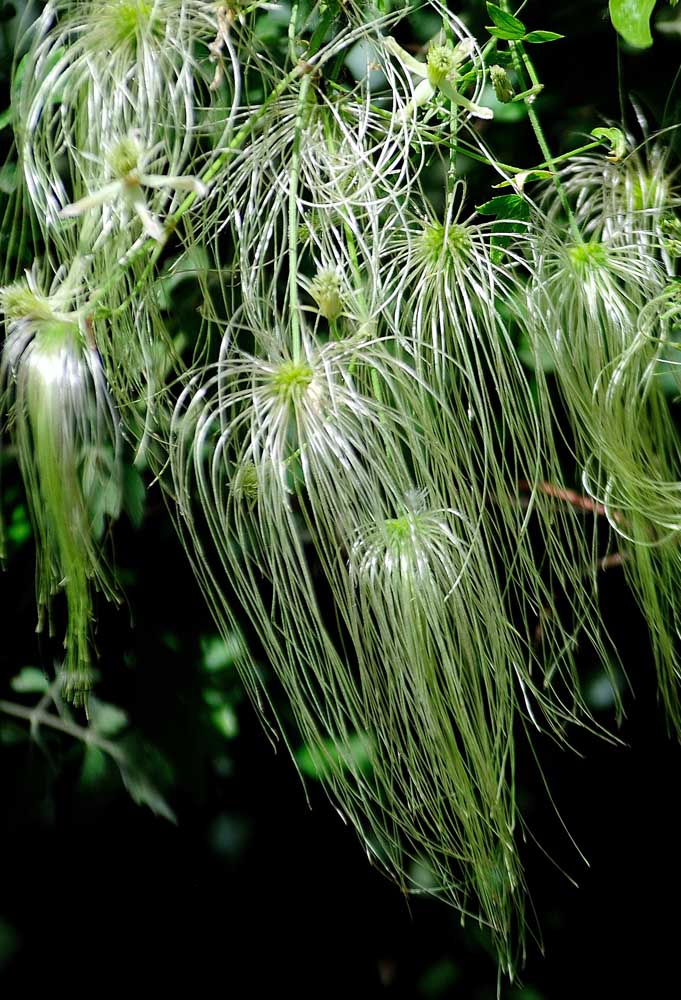Autumn clematis can provide cover and color
Published 12:00 am Tuesday, September 22, 2015

- TNSThe native Virgin’s Bower, Clematis virginiana, has similar flowers but also exhibits one of the most unique seed displays in the plant world.
The last few weeks the sweet autumn clematis has been among the showiest plants in our cottage garden at the Coastal Georgia Botanical Gardens. It was the perfect choice to drape over a new lattice fence. If you have an ugly fence or wall that you need to dress up, this may be the perfect vine for you.
The blooming of our sweet autumn clematis is always a pleasant surprise as it bursts forth in August and September with what seems to be thousands of small, fragrant white flowers. If you’ve been paying attention this fall you probably have seen them blooming at some neighbor’s house near you or for sure in the neighborhood and probably paused for a second glance.
It is known botanically as Clematis terniflora and is cold hardy from zones 5-9. It is easy to grow and adds a wonderful splash of pristine white to any styled landscape. It boasts an almost vanilla-like scent and is one of our easiest-to-grow vines. It is so easy you would swear it was native, but truth be told it is from Japan.
Give it good rich soil and ample food and water and then stand back. It is quick to cover and can reach up to 25 feet with support, but with proper training and pruning it can be kept neat. Sweet autumn clematis blooms only on new wood produced in the current season. The vine will usually freeze to the ground each winter, at which time it may be cut back.
A few locales have labeled it as invasive, so for many gardeners the native Clematis virginiana would be a super choice. As you might expect the native one is a little harder to find in the market place; go figure.
It has common names like Virgin’s Bower, as well as regional names like Old Man’s Beard, Goat’s Beard, Woodbine and the not-so-glamorous Devil’s Darning Needle. Strangely, at some point during the plant’s bloom cycle you can see the reasoning behind each name.
If you drew a line straight up from Texas to Canada the Clematis virginiana is native in every state east. These are tough vines that deserve accolades. As with the sweet autumn clematis, the Virgin’s Bower excels on the trellis or fence. Need something to drape a rustic split rail fence? This is the one for you. Find yourself looking for a vine for a colorful purple picket fence? Look no further.
While everyone loves clematis, these natives unfortunately have taken a back seat to the big colorful imports. As you might expect from natives, they will attract an abundance of bees, butterflies and hummingbirds. You’ll even find delightful fragrance with the C. virginiana and may wonder why it isn’t sweet autumn clematis.
Virgin’s Bower can climb from 12 to 20 feet, offering pristine white blooms followed by the glistening avatar-like seeds called achenes. Like many clematis, they have the ability to climb on their own without a lot of management on your part.
Vines like these clematises are so important in the landscape-design process because they create a vertical element similar to hanging a picture in the family room. Think about using them for the ultimate cottage garden. Partner with a bold drift of blue salvia like Victoria Blue, Cathedral Deep Blue or Mystic Spires blue placed next to another patch, of perhaps pink, like PowWow Wild Berry echinacea coneflower or Fireworks gomphrena.






